Cold Calling Tips, Skills & Strategies: How to Get Better at Cold Calls

- September 20, 2022
Cold calling is tough.
With nothing but a phone number and name, you must interrupt someone's day and try to sell them your product or service.
To make things worse, cold calling can have some of the highest rejection rates and a bad reputation for being a nuisance.
Yet somehow, it’s often hailed as an art to be mastered for successful sales and marketing. The truth is, it's still one of the most effective ways to reach potential customers. It just takes a bit of finesse and strategy.
Companies that make use of cold calling campaigns use CRM software to help organize and execute their campaign. With Myphoner, businesses, start-ups and every freelancer can create and execute cold calling campaigns that lead to more calls and more conversions.
So at Myphoner, we're going to cover everything you need to know on cold calling, and how to effectively get better at it to dominate your company's sales goals.
Quick pause to highlight Myphoner. Don't worry, your article resumes below.
Selling to undefined over the phone?
Use our sales dialer to call customers and prospects in undefined at the most competitive rates

What is cold calling in sales?
Let's review the basics quickly: A cold call is a sales call made by a sales rep to someone who doesn't know about their business yet. You must take them from "cold" status to "warm" by introducing your brand and cultivating their interest in your offering.
A warm call, in contrast, would be calling someone who has actually heard of your company and service from a previous interaction.
By cold calling, you have the opportunity to introduce yourself and your product or service to a potential customer. We'll primarily focus on phone sales calls in this article since it's the most common.
Why Use Myphoner for Cold Calling?
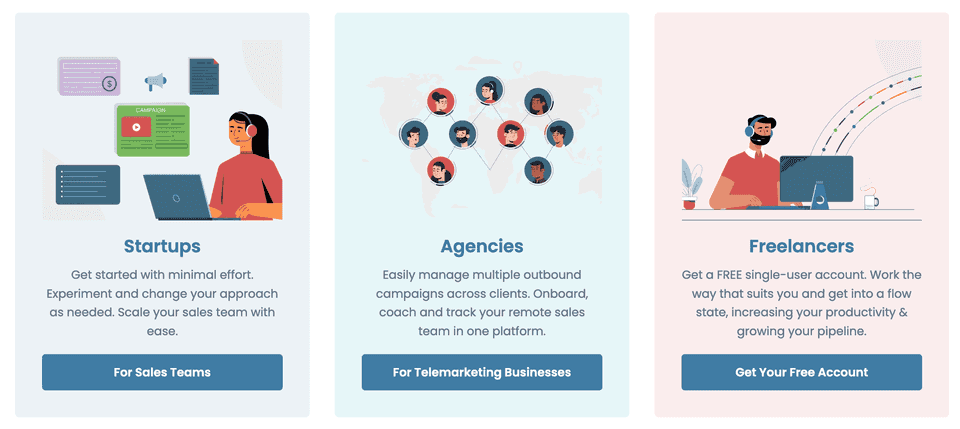
Myphoner can easily organize a team of agents and allows you to conduct more cold calls in a day. That allows your business to get more leads which can lead to more conversions.
Using the platform’s easy-to-read dashboard, you can monitor each cold calling agents on your team. From there, you can get real-time feedback and make on-the-fly adjustments to your cold calling campaign.
As an example, let’s say that you want to make 2,500 cold calls in a day and you have a team of seven agents. With Myphoner, you can monitor the progress of each agent and see which ones are reaching more leads. From there, you can quickly make the needed adjustments to refine the campaign and get better results.
After we talk a little about the value of cold calling, we will explore the many ways that Myphoner can help you make the most of any cold calling campaign.
Why is cold calling important for your business?
Cold calling is one of the best ways to get in touch with people who would be interested in your product or service but might not know about it. But with all the easier marketing alternatives these days, why bother with cold calling anymore?
Here's a shortlist on why successful sales teams still do cold calling:
- Optimize your sales pitch. Repeated sales calls offer excellent training to perfect your sales pitch by doubling down what works and scrapping what doesn't. This helps your overall communication and selling points, which can come to use in pitches for investors, for example.
- Learn from raw interactions. No manufactured emails, fluffed up messages, or scripted voicemails. Phone sales calls allow for an unmasked and natural interaction between the sales rep and prospect, revealing their genuine feelings, intentions, and pain points to help you better serve them.
- It's an intimate start to your relationship. In the age of emails, social media ads, and messages, a phone call gives sales reps the exclusive opportunity to make a human connection with their tone of voice. With more intimate rapport-building through phone calls, a prospect can more easily trust the brand (put a name and voice to it), and ultimately convert quicker.
Related: When To Use Cold Calling In Your Sales Strategy
Now that we've established why cold calls are worth your time, let’s quickly go over some of the don'ts when it comes to cold calling. Because knowing what not to do can be as equally important as knowing what to do, as it may save you from costly mistakes.
Personalized Outreach on Steroids

Common cold calling mistakes to avoid
Cold calling makes most people cringe, but it doesn't have to be that way. When done right, cold calling is an effective strategy for reaching more prospects and fueling your sales pipeline.
Here are some of the most common mistakes made when cold calling:
- Going overboard on the research. Do you know why one offhand comment about the weather can be so disarming? Because it breaks the ice. Too much research can have the opposite effect and make you seem scripted, unauthentic, and downright creepy. Ensure that your research is relevant to the campaign—you don’t need to know the CEO’s birthday or the name of their child. The worst thing you can do is spend too much time on excessive research, which will hinder your productivity and distract you from what's important: the human connection.
- Calling someone twice with the same pitch. There's nothing more embarrassing, nor more sloppy. Accumulating duplicate contact data is a common problem, but fortunately, Myphoner can detect possible duplicates and gives you the option to eliminate them.
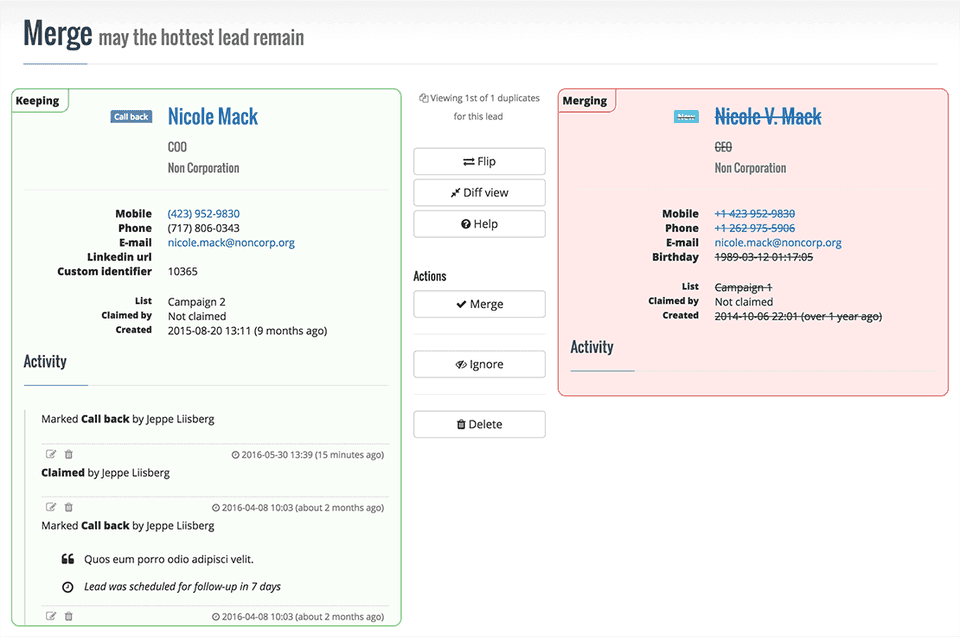
- Calling after hours. Nobody likes being woken up in the middle of the night or during lunch, so avoid calling prospects outside their business hours unless it's really urgent. You can also schedule time-based calls through Myphoner to always stay on top of things.

- Not having a clear goal for the call. Always come into a cold call with a specific goal in mind, like scoring an appointment later on, learning more about their needs, or simply planting the seed for future funding like a salesperson. The listener can tell if you're disorganized and won't take you seriously if you don't approach with a clear purpose.
- Not following up. You can expect to win a prospect over from one call. Follow-ups are important, but every sales team forgets sooner or later. With Myphoner's custom preset email template feature, follow-up messages are sent for you after certain triggers—that way, you don't have to worry about remembering.
Many common cold calling mistakes can be solved by better organizing how your cold calls are made. That’s where Myphoner’s Power Dialer feature comes in. When you use Myphoner’s Power Dialer features, you are able to really supercharge your cold calling campaigns and get more leads in less time.
Power Dialer is designed to automate the entire dialing process. As an example, Power Dialer features an Auto-Dialer Initiator which cuts down the time that an agent normally uses to dial up the next call. Let’s say that you have an agent that gets dropped into voice mail on 20% of her calls. That could eat up as much as an hour of her day. With the Power Dialer feature, the system will automatically drop pre-recorded voicemail and send your agent to the next call.
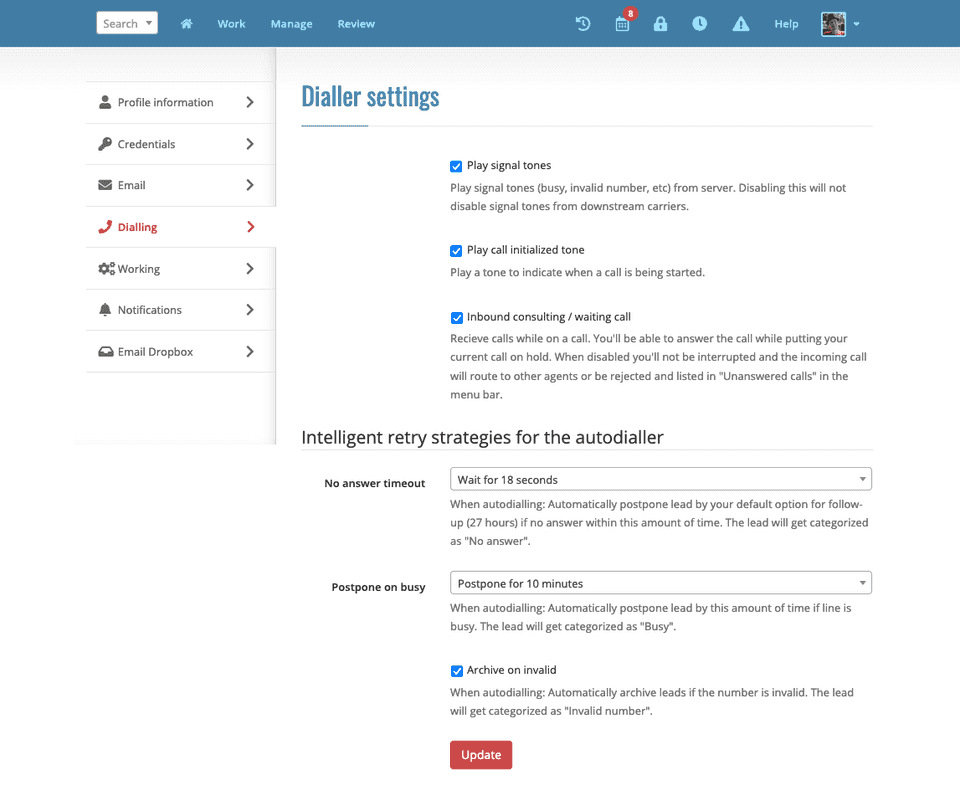
Power Dialer’s Voicemail Drop is one of the smartest ways to turn a “lost call” into a potential lead. When your agent gets dropped into voice mail, the Voicemail Drop system leaves a pre-recorded message with a callback number. This gives your agent a second chance to have contact with the lead.
One of the best ways to boost your cold calling campaign is to be able to help your agents when they are live with a lead. With Live Monitoring, you can listen in on any call. There is also a whisper feature that allows you to interact with the agent while they are on the phone with the lead.
Finally, Power Dialer is easy to set up for your remote agents. You can onboard your agent with a computer, internet browser, a working internet connection, and a headphone set with a microphone. We find that many remote teams get better results using MyPhone’s Power Dialer features.
Okay, now that we have the common mistakes out of the way, we’re ready to go over the best cold calling tips and become a better cold caller to secure more sales.
Cold Calling Tips for Success
1. Remember that cold calls are an introduction, not a diehard pitch.
In the past, cold calling was often seen as a way to quickly trick prospects into purchasing something they neither wanted nor needed.
If that's how you view cold calling, you need to update your outlook for the 21st century. Today, salespeople focus on identifying and meeting customer needs, and they know a cold call is only the first step.
Face it: no one will listen to your spiel and decide to buy your stuff that very same call. Maybe 1 in 10 000. Plan a series of sales calls and take it slow to increase your chances of conversion.
2. Say goodbye to performance anxiety by developing a script.
Calling a stranger can naturally cause a bit of anxiety. But when you're nervous, you may find yourself rambling on with your spiel, tripping over words, and using a bit too manyums and uhs. That's why it can be a good idea to prepare a cold calling script (that you can continuously refine) if you're one who tends to choke on their pitch.
There is controversy over whether sales scripts are useful tools. It's important to remember that you shouldn't mindlessly read off a piece of paper. You'll come off fake, manufactured, and careless.
The real purpose of a sales script is to force you to think through what you want to say. Once you have a sales script you're comfortable with, you can use it as a jumping-off point, rather than following it word for word, regardless of how the conversation unfolds.
Practice your call, use names strategically, and develop an effective tone of voice before you dial the first number. You might also want to record yourself so you can replay your introduction to ensure you're confident without being overwhelming.
The best cold calling tools like Myphoner also feature call recording capabilities that allow sales professionals to go back and study their interactions with prospects and refine their approach.
3. Optimize your cold-calling space.
Once you're ready to start contacting sales leads, take the time to create a supportive environment for a truly successful cold call. For example,
- Don't multitask. No one likes talking to someone who's distracted. Apart from causing those frustrating pauses, distraction can make it appear like you don't truly care. Maintaining focus is even more critical when you're speaking to someone for the first time. So get rid of any distracting elements like a TV or computer, objects to fidget with, and leave other projects for later.
- Have a list of questions on standby. Have a few questions posted in front of you to ask your prospect and keep the conversation flowing, this will fill the awkward silences and show that you've done your research.
- Block any outside noise. The last thing you want is for unprofessional background noise to interrupt your sales call. See that you're in a quiet secluded room with no one coming to bother you while you're in the middle of closing.
- Use a mirror. Until you're skilled at putting a smile in your voice, look into a mirror while making calls to remind yourself that you're talking to another human being, not a sales lead. Try it while you're recording practice calls: Smile for part of your conversation, and listen to the difference it makes in your delivery.
- Get a headset. Set up your work area to support an upbeat, enthusiastic mood, and invest in a good-quality headset. You'll avoid shoulder and neck fatigue while leaving your hands free to take notes or find needed information.
- Find software providing an optimal workflow for cold calling. A power dialer, for example, is great for efficiency and distraction-free calling. This software could be Myphoner, of course, but doesn't have to. Explore the market and find something intuitive for you.
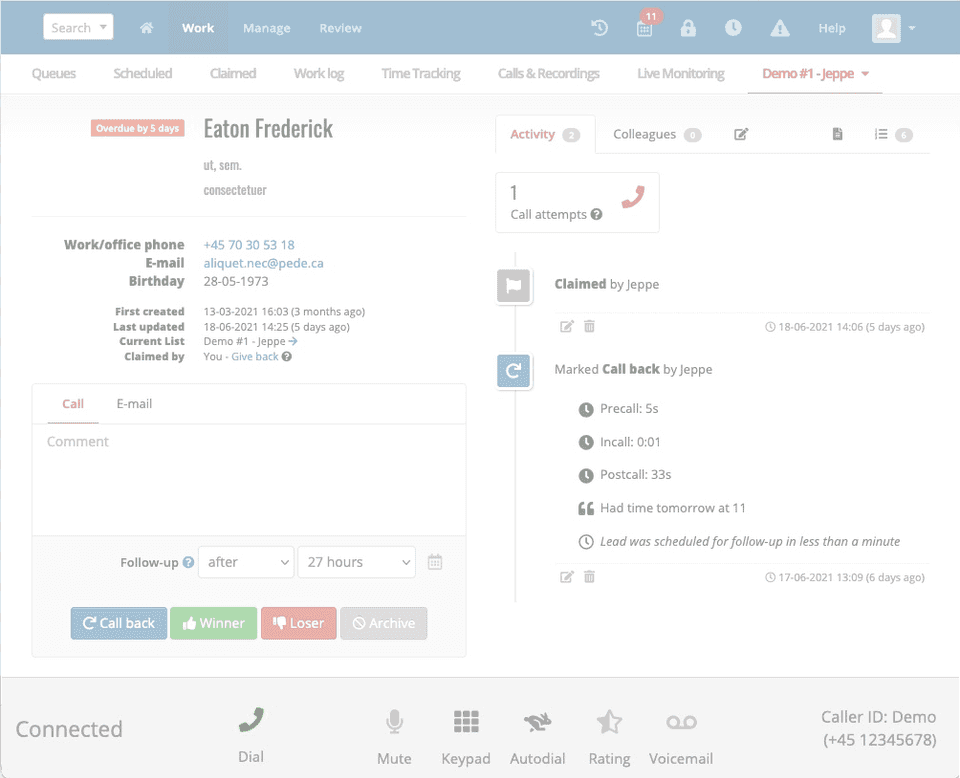
4. Prepare to leave a voicemail
It would be wonderful if we answered the telephone every call, but that's not a realistic expectation. When you leave a voicemail, remember that it's your opportunity to capture your prospects' interest, which may motivate them to take your next call.
Decide on a structure for leaving a voicemail that's short, but not rushed. In the message, introduce yourself, briefly describe the value you can offer, leave contact information, and make sure you're smiling!
5. Schedule breaks
Don't turn your cold calling into an exhausting marathon. Take a five-minute break after each half-hour to get up, stretch and clear your mind. It's also a good time to congratulate yourself on the progress you're making in sales lead generation.
With Myphoner’s integrated time tracking, sales managers and executives can see how their agents are spending their time on cold calls. This arms management with powerful data to help their sales teams optimize their time and day.
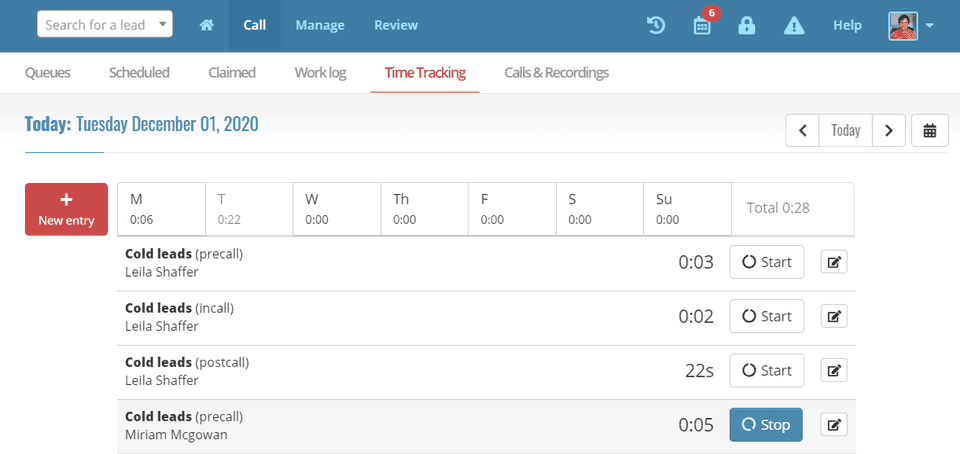
6. Follow up
The best cold callers are relentless in their pursuit of a sale. If you don't hear back from a prospect after leaving a voicemail or an email, it's perfectly acceptable to follow up with another call or email.
With cold calling software like Myphoner, never forget follow-ups again with predefined and personalized emails ready to be sent to your selected leads. This way you can keep in touch to keep the conversation fresh in their minds and schedule a closing call in the future.
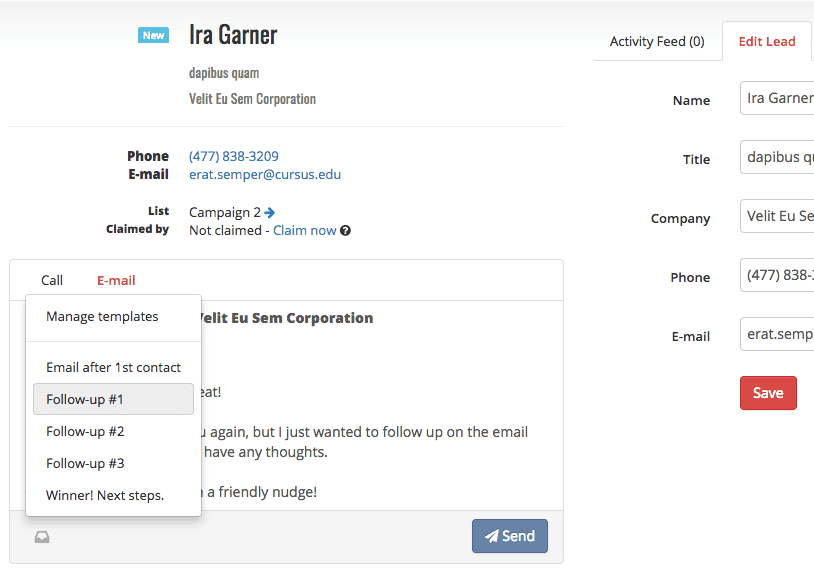
7. Practice, Practice, Practice
The only way to get better at anything is to practice. The more you cold call, the more comfortable you'll feel and the smoother your calls will go. Cold calling can be frustrating, but it's also an extremely rewarding process when you land a new customer.
What are the most important cold calling skills?
Nailing the art of cold calling is arguably one of the most difficult sales skills to master, owing to a slew of variables that influence a rep's success or failure. So on top of those seven tips on how to cold call effectively, below are the best cold calling techniques that really work during a call:
-
Relatability. A surefire way to get your call prioritized is by establishing a "me too" rapport with gatekeepers. Your service exists because you once faced the same problem they're facing right now. Show that you care about your prospect's success, sympathize with the challenges they face, acknowledge and express interest in solving their needs.
-
Selling with a sense of urgency. One trick to better closing is by drumming up a sense of urgency when the gatekeeper picks up your call. Ask about an issue plaguing their business and offer a customized—but digestible—solution that they can take to higher-ups. It's very easy to sound overly pushy and desperate with this effect, so knowing how to do it properly is priceless.
-
Wading through gatekeepers. Closing is easier when you're dealing with the right decision-makers. But, usually, there are gatekeepers like assistants and secretaries diluting your message and outreach efforts before it touches the director.
- It’s crucial that you explain problems and solutions clearly so they understand the significance without getting confused. That way, they’ll be more tempted to put you through, or else it may have consequences.
- Speak with confidence but remain respectful, don't sound scripted, establish trust, call at the best times for their day-to-day, and see that the gatekeeper speaks highly of you to higher-ups.
-
Relevant questioning. A meaningful, personalized, and actionable conversation comes from asking the right questions. Though having a question list on standby is best practice, whipping up open-ended questions in a cold call from context is an invaluable skill that will help you learn about the prospect more deeply and keep them engaged.
-
Persistence & objection handling. The art of persuasion is not about getting your prospect to say "yes." It's about saying "no" in ways that leave the door open for you. The key here is to have a consistent, personalized approach that fluidly reacts based on the context of each call while not being a nuisance. This way, they'll be inclined to give you a second chance, and eventually a third.
-
Knowing when to give up. On the flip side, if a prospect isn’t showing interest by the 6 or 7th call, it may be time to stop bugging them. The last thing you need is for people to publicly brand you as an annoying and pushy company that can’t respect customers.
Making cold calls can be a daunting task, but if you follow these tips, you'll be well on your way to becoming a cold calling pro. And don't forget to have fun with it – after all, selling should always be enjoyable!
How to approach a cold call in sales
Cold calling is one of the most common techniques used by business professionals to gain new clients, but it's also among the most difficult skills to master.
You've got the tips, you know the skills, so how do you actually go about creating one? Here are a few basic steps that you can take to start your cold calling process.
1. Research your target market. This is the most important step in any cold calling strategy, it'll help you better understand who you're trying to reach and which messages will be most effective. Without proper research, you can't personalize messages or target the right audience—so you'll be wasting time and money on deliverables for little return.
2. Select the right kind of contact information. You can purchase contact lists of potential prospects from vendors all-over, but it's important to vet the list for accuracy. It can be risky and unreliable since the data may not be up-to-date or include qualified leads. Make sure that you're sourcing contacts with the right suppliers, and reach out in the best way possible—maybe they're an email-over-LinkedIn person.
3. Prepare personalized messages. Using a generic message will not produce the desired results, as most prospects will see through it and will be uninterested in speaking with you. Personalize your messages by addressing the prospect by name, describing how you are familiar with their company, and highlighting the benefits of working with you.
4. Make calls at the right time. The best time to make a cold call is during the afternoon like before lunch or toward the end of the workday on Wednesdays and Thursdays. But remember that it also depends on your target audience; prospects in one industry may have different work hours and call-time preferences than others. As you make your first dozen calls, keep an eye out for the best response times and even ask prospects for their preferred dates and times to be contacted. Over time with more data, you’ll learn the best periods during the day to call your prospects.
5. Be prepared to leave a voicemail message. Bringing back tip #4, if you can't reach someone directly, try leaving a message with your name and information about the benefits of your product or service to try and secure their interest. And if they don't return your call within 3-4 days, you can shoot some more follow-ups (95% of all converted leads are reached by the sixth call) before calling someone else. Different industries can have different limits, we’ve found that the number typically ranges from 6-20 at Myphoner.
Related: Yet another "Five steps to get started with cold calling"
Distributing Your Cold Calls The Right Way
One of the biggest challenges in a cold calling campaign is getting the right lead list to the right agents. . This is where the Myphoner Lead Routing comes to the rescue. With Lead Routing, you can reduce a day’s work into a few minutes and route thousands of leads at the push of a few buttons.
As an example, let’s say that you want to send West Coast leads to agents who live in the West Coast of the United States. Using the segments function on the Lead Routing feature allows you to filter your leads by geographic location and send out the right leads in seconds.
Overall, this allows you a better chance of converting your leads into sales. In fact, you can execute Lead Routing in a number of ways. You can route by geographic location, income, past contact, and more.
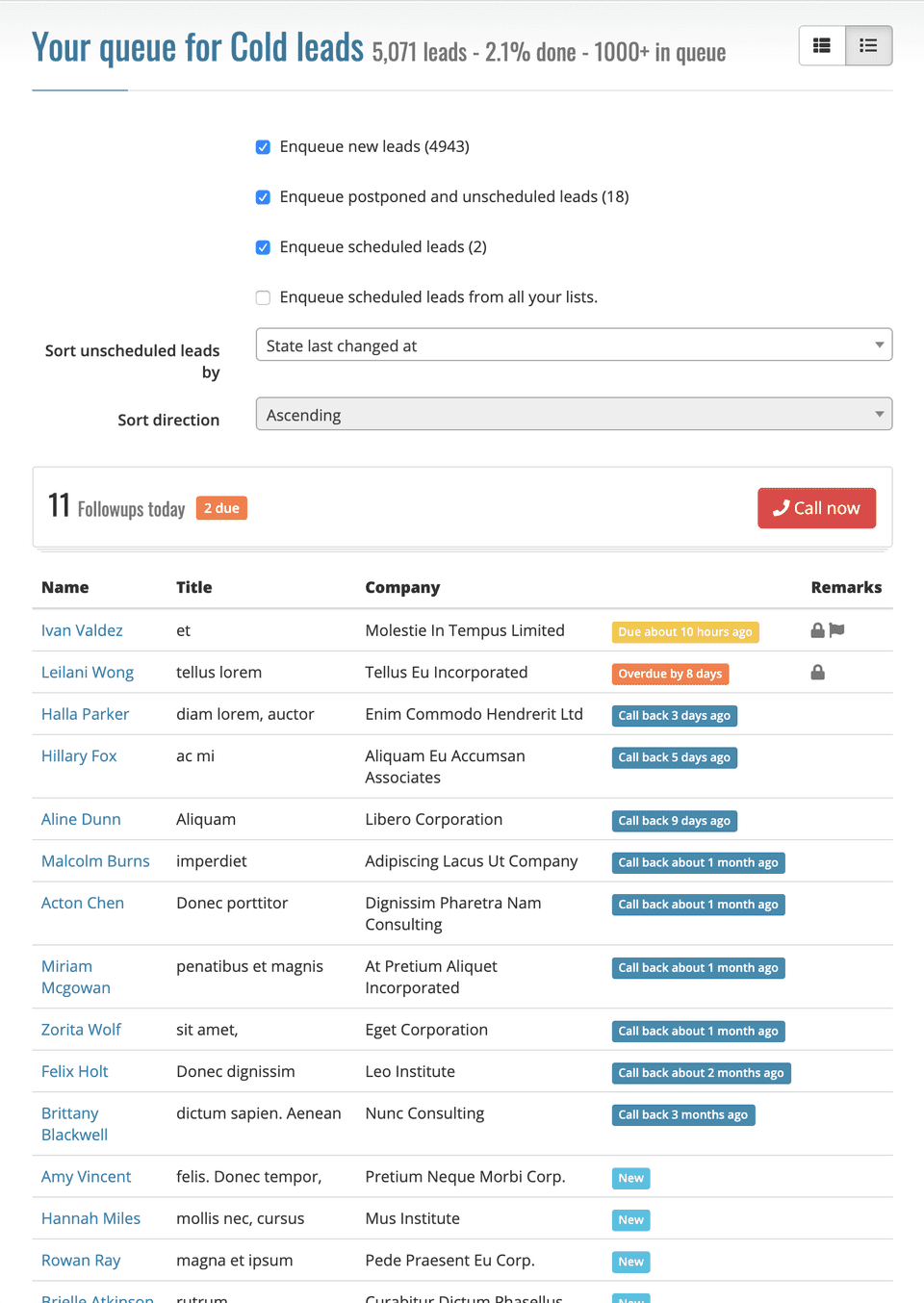
Lead Routing not only helps the manager of the agent team, but it can also help the agent organize her calls. For instance, the agent can organize calls by their contact history with the lead.
- First calls
- Call backs
- Retry
By organizing leads a certain way, agents are better able to set up a strategy for closing more leads. This could lead to much better results over the long term.
Finally, Lead Routing will allow you and your team to complete more cold calls. When both your manager and the agent have a more efficient way to get more calls completed, they are bound to get better results. This goes a long way to increase sales productivity.
Evaluating Cold Calling Agents in Real Time
Perhaps one of the most important parts of a cold calling campaign is the ability to measure its effectiveness in real-time. Myphoner makes it easy to see how each one of your agents is doing in real-time. In fact, you can measure each agent by a various number of metrics.
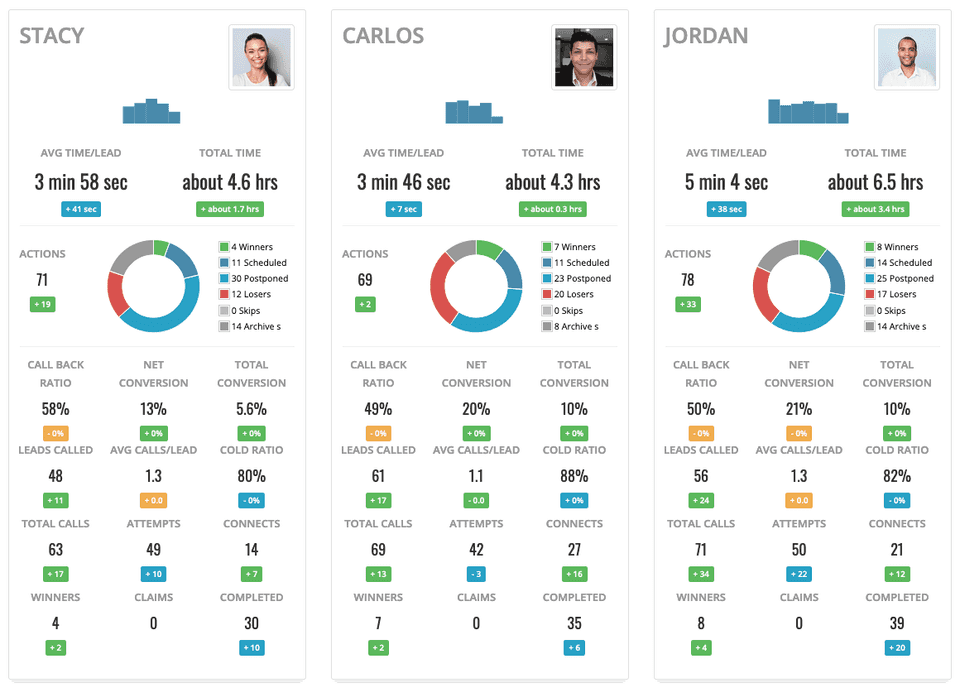
Some of the metrics that you can measure include how many calls are being made per day, how much time an agent is spending on a call and how many conversations are executed each hour. Managers can even add or remove metrics to allow them to focus on what is most important.
Whether you are just starting out or you have a growing team of agents, Myphoner makes it easy to monitor both small and large teams around the world, in real-time.
In fact, Myphoner is unique in that it not only allows you to be better organized, but it can also help increase sales performance.
Personalized Outreach on Steroids

Cold Calling Does Not Have to Sound Pushy
Cold calling isn't for everyone and may not be the best method to market your products or services. It can be a frustrating experience—if you aren't prepared, don't have a strategy in place, or are trying to push people when they aren't ready for it.
The key is preparation through targeted research and personalized outreach, without being pushy. With some practice and the right cold calling software by your side, you'll dominate your space in no time by closing customers left and right.

Written by
Jeppe Liisberg
Jeppe Liisberg is a forward-thinking entrepreneur and software developer who has built and contributed to multiple successful startups. With a philosophy centered on creating focused, specialized solutions that excel at solving specific challenges, Jeppe founded Myphoner after identifying a critical gap in the market for effective cold calling software.
"I believe that exceptional software should solve one core problem extraordinarily well rather than attempting to be everything for everyone," says Jeppe. "After years in the trenches as an entrepreneur, I couldn't find a cold calling solution that truly met the needs of small businesses and sales teams—so I built Myphoner to fill that void."
Today, Jeppe remains personally invested in Myphoner's success and customer satisfaction, personally welcoming new users and actively responding to feedback. This hands-on approach ensures that Myphoner continues to evolve based on real user needs while maintaining its commitment to simplicity, effectiveness, and affordability.
Connect with Jeppe on LinkedIn or reach out directly at jeppe@myphoner.com.
Related articles

Industry Related
How to Hire a Great Sales Development Representative (SDR)
Understand the role of a sales development representative (SDR) & what skills & attributes to look for when hiring one.
October 3, 2022

Industry Related
9 SMS Use Cases for B2B Sales
SMS messaging has better traction than most other forms of outreach, is affordable to use & increases sales. Learn how to use it as part of your sales strategy.
October 2, 2022

Industry Related
What is a Sales Budget? Definition, Examples, And How to Create One
Learn all about sales budgets, what they are, why they're important & how to create one.
September 23, 2022